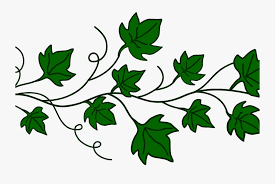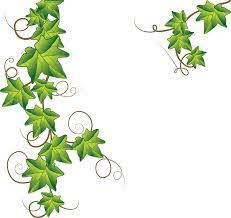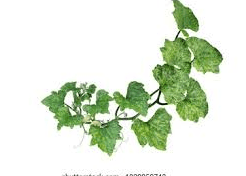The fluted pumpkin, also known as Ugu (Telfairia occidentalis), is a vital leafy green vegetable native to West Africa. This vigorous climber thrives with the help of a unique structure: tendrils. These fascinating appendages are more than just grasping hooks; they represent a marvel of botanical engineering, crucial for the plant’s growth and survival.
Fluted pumpkin tendrils are slender, thread-like extensions that emerge from the vine’s internodes, the areas between leaves. They are negatively phototropic, meaning they grow away from light. This characteristic allows them to efficiently scan their environment for potential support structures. Once a tendril encounters a suitable object, its tip comes into contact and initiates a remarkable transformation.
The tendril tip expands and becomes adhesive, secreting a sugary substance that acts as a biological glue. Simultaneously, the tendril undergoes a process called thigmotropism. Tiny sensory organs on the tip, called thigmonastic triggers, detect the physical contact and send a signal to the plant. This triggers a growth response, causing the tendril to coil tightly around the supporting structure. The coiling motion further strengthens the grip, ensuring the vine remains securely anchored.
Fluted pumpkin tendrils exhibit a remarkable degree of dexterity. They can not only coil around vertical supports but also wrap around horizontal structures and even twine around other climbing plants. This versatility allows the fluted pumpkin to navigate complex environments and maximize its access to sunlight, a critical factor for photosynthesis.
The tendrils themselves are surprisingly strong. They are composed of vascular tissue, transporting water, nutrients, and sugars throughout the vine. Additionally, they contain supportive fibers that provide structural integrity, allowing the tendrils to withstand wind and the weight of the growing vine.
Interestingly, the tendrils of fluted pumpkin exhibit a fascinating phenomenon known as circumnutation. This refers to the slow, circular motion of the tendril tip as it searches for support. This continuous exploration allows the tendril to efficiently scan a large area and significantly increases its chances of encountering a suitable structure.
The importance of tendrils for fluted pumpkin extends beyond simply providing physical support. Studies suggest that tendrils may also play a role in communication. Research indicates that tendrils might be involved in the transmission of information about light availability or stress within the plant. This potential role in communication highlights the intricate and multifaceted nature of tendrils.
However, tendrils are not foolproof. Certain factors can impede their effectiveness. For instance, strong winds can cause them to break, disrupting the vine’s support system. Additionally, excessively smooth surfaces can hinder the tendril’s ability to adhere, leaving the vine vulnerable to toppling.
In conclusion, fluted pumpkin tendrils are not merely grasping hooks; they are sophisticated sensory organs and vital support structures. Their ability to detect touch, secrete adhesives, coil tightly, and exhibit circumnutation allows the fluted pumpkin to navigate its environment and secure the support necessary for reaching sunlight and achieving optimal growth. As research on tendrils continues, we may discover even more about their fascinating capabilities and their role in the remarkable success of climbing plants like the fluted pumpkin.
The Economic Importance and Uses of Fluted Pumpkin Tendrils

1. Support Structure: The primary function of fluted pumpkin tendrils is to provide structural support for the vigorous climbing vine. These thin, spiraling structures act like grappling hooks, allowing the vine to ascend fences, trellises, or other climbing structures. This not only maximizes growing space but also keeps the leaves off the ground, improving air circulation and reducing pest problems.
2. Identification of Male Plants: Interestingly, fluted pumpkin is a dioecious species, meaning there are separate male and female plants. Male fluted pumpkin plants tend to produce tendrils earlier and in greater abundance compared to females. Farmers can leverage this characteristic to identify male plants early in their growth cycle. Since the leaves of the male plant are generally less desirable for consumption, early identification allows for selective removal, optimizing yield of the more valuable female leaves.
3. Potential as a Leafy Vegetable: While not as common as the leaves, fluted pumpkin tendrils are sometimes consumed as a leafy green vegetable themselves. They have a slightly tougher texture than the leaves but offer a similar nutritional profile. Some cultures stir-fry the tendrils with other vegetables or add them to soups and stews for a unique textural element.
4. Medicinal Uses: Traditionally, fluted pumpkin tendrils have been used in some parts of West Africa for their purported medicinal properties. Research is ongoing, but some studies suggest potential benefits for wound healing and blood sugar regulation. It’s important to consult a medical professional before using fluted pumpkin tendrils for medicinal purposes.
5. Livestock Fodder: Fluted pumpkin tendrils can be a valuable source of roughage for livestock. While not as nutritious as the leaves, they offer essential fiber for ruminant animals like goats, sheep, and cattle. Additionally, the tendrils can be chopped and mixed with other feed ingredients to create a more balanced diet.
6. Composting: Fluted pumpkin tendrils, along with other plant trimmings from the fluted pumpkin plant, can be composted to create a nutrient-rich soil amendment. The tendrils decompose relatively quickly, providing readily available organic matter to improve soil fertility and water retention.
Read Also Scrapie in Sheep and Goats: Description, Damages Caused, Control and Preventive Measures
The Products and By-products That Can Be Derived From Fluted Pumpkin

1. Leaves: The primary product of the fluted pumpkin plant is its leaves, which are a popular leafy green vegetable throughout West Africa. They are rich in vitamins, minerals, and antioxidants, making them a nutritious addition to any diet.
2. Seeds: The mature seeds of the fluted pumpkin are also edible and can be roasted or boiled for consumption. They are a good source of protein and healthy fats. Fluted pumpkin seeds are also sometimes pressed for their oil, which has culinary and industrial uses.
3. Young Shoots: The young shoots and tips of the fluted pumpkin vine are considered a delicacy in some regions. They are harvested before the tendrils develop and can be eaten raw, boiled, or stir-fried.
4. Vine: The mature fluted pumpkin vine can be a source of fiber for various applications. In some areas, the vines are dried and woven into baskets, mats, and other functional items.
5. Biofuel: Research suggests that fluted pumpkin biomass, including the vine and tendrils, has potential as a source of biofuel. The cellulose content of the plant can be converted into ethanol or biogas through fermentation processes.
6. Medicine: As mentioned earlier, various parts of the fluted pumpkin plant, including the tendrils, are used in traditional medicine for various ailments. More scientific research is needed to validate these claims.
Read Also Management of Breeding Stock in Sheep and Goats
Frequently Asked Questions (FAQs) About Fluted Pumpkin Tendrils

1. Are fluted pumpkin tendrils poisonous?
No, fluted pumpkin tendrils are not considered poisonous and can be consumed safely. However, as with any new food, it’s advisable to introduce them gradually into your diet and be mindful of any allergic reactions.
2. Do fluted pumpkin tendrils taste good?
The taste of fluted pumpkin tendrils is subjective. They have a slightly bitter flavor compared to the leaves but can be enjoyable when cooked properly.
3. How to prepare fluted pumpkin tendrils for consumption?
Fluted pumpkin tendrils can be washed and chopped, similar to other green vegetables. They can be stir-fried, boiled, or added to soups and stews. Some recommend blanching them briefly in boiling water before cooking further to improve their texture.
4. Where can I buy fluted pumpkin tendrils?
Fluted pumpkin tendrils may not be widely available outside of West Africa. However, you might find them at some African grocery stores or online retailers specializing in exotic vegetables.
5. Are there any substitutes for fluted pumpkin tendrils?
If you can’t find fluted pumpkin tendrils, you can substitute them with other green vegetables with a similar texture, such as asparagus, green beans, or long beans.
6. How do I identify male fluted pumpkin plants using tendrils?
Look for plants that produce a greater abundance of tendrils earlier in their growth cycle compared to others. This is a potential indicator of a male plant.
7. Is it safe to use fluted pumpkin tendrils for medicinal purposes?
Fluted pumpkin tendrils have been used traditionally for medicinal purposes, but more scientific research is needed to confirm their efficacy and safety. It’s always best to consult with a healthcare professional before using any plant for medicinal purposes.
8. How can I compost fluted pumpkin tendrils?
Fluted pumpkin tendrils can be added to your compost pile along with other organic materials. Chop them into smaller pieces to encourage faster decomposition.
9. Can fluted pumpkin tendrils be used as animal feed?
Yes, fluted pumpkin tendrils can be a good source of roughage for livestock. They can be chopped and mixed with other feed ingredients to create a balanced diet.
10. What is the future potential of fluted pumpkin tendrils?
With further research, fluted pumpkin tendrils may hold promise for various applications beyond their traditional uses. This includes potential as a source of biofuel, additional exploration of their medicinal properties, and even wider acceptance as a unique culinary ingredient.
Read Also How to Make an Avocado Tree Bear Fruit
